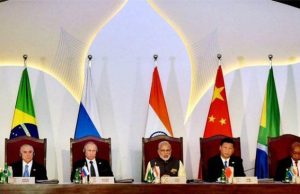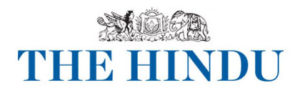
18-10-2016 (Important News Clippings)
To Download Click Here
Kigali triumph
Deal to phase out HFCs bolsters the fight against global warming
More than 150 countries reached a deal in Rwanda’s capital city of Kigali to phase out Hydrofluorocarbons (HFCs), significantly bolstering the fight against climate change. The deal comes in the form of an amendment to the 1989 Montreal Protocol, which aimed to end the use of Chlorofluorocarbons that damaged the earth’s ozone layer and had in fact seen Chlorofluorocarbons being replaced by HFCs. However, scientists later discovered that HFCs, while benign to the ozone layer, were thousands of times more potent than carbon dioxide in trapping heat radiating off the earth.
Given that HFCs have seen increasing use in refrigerators, air conditioning and aerosol sprays, they constitute the fastest growing greenhouse gases. The Kigali agreement aims at reducing their usage by providing three pathways for the international community. First, developed nations like those of the European Union and the US will start limiting their use of HFCs within a few years and make a cut of at least 10% from 2019. Second, fast developing countries like China and island nations will freeze their use of HFCs from 2024. Meanwhile, other developing countries like India will freeze their usage by 2028.
Put together, the freezes and cuts are aimed at reducing global warming by half a degree celsius. Importantly, the Kigali amendment to the Montreal Protocol is legally binding and brings within its ambit all top global emitters including the US and China. Plus, it upholds the principle of common but differentiated responsibilities in tackling climate change – something that India has consistently pushed for. In fact, it’s this flexibility commensurate with each nation’s capabilities that facilitated the passage and now ratification of the Paris Climate Accord. In the run up to the Marrakech climate change summit in November, the Kigali deal on HFCs is certainly a game changer.
Date: 18-10-16
Old boys’ club
BCCI must abandon its resistance to Lodha Committee reform package or be made to do so
The Board of Control for Cricket in India’s (BCCI’s) brinkmanship – in order to avoid implementing Lodha Committee’s recommendations for an overhaul of itself – is hurting Indian cricket. The board has repeatedly tried to cherry pick recommendations with the aim of preserving status quo in key areas. But the recommendations are an integrated package of reforms put together by a Supreme Court appointed committee, after extensive consultations with people associated with Indian cricket. It is in the best interests of Indian cricket if the organisation responsible for running the game voluntarily accepts reforms.
Supreme Court yesterday reserved its order on BCCI’s reluctance to undertake reforms recommended by Lodha Committee even though the apex court has upheld them. BCCI’s actions are tantamount to defiance of the apex court. The underlying cause is an attempt to keep administration of the most popular game in India a closed club accessible to only a handful. That way, administration of enormous revenues generated by the game can be rendered opaque and kept the monopoly of a few. The infamous 2013 IPL brought matters to a head. But BCCI in characteristic style embarked on a cover-up which ended badly. It has only itself to blame, therefore, for the Supreme Court’s intervention.BCCI has failed to keep up with the times that call for accountability, allowing appalling practices to creep in. Any modern organisation has to craft rules to avoid conflicts of interests lest it compromise its primary purpose. BCCI not only failed in this task, it went to the extent of writing regulations which institutionalise conflict of interest. Lodha Committee’s reforms aim to correct these anomalies, besides providing a template for other compromised sports associations in India.
The way forward is for the cricket board to commit itself to the recommendations it has tried to avoid. A cooling off period for administrators prevents concentration of power and provides opportunities for a wider talent pool. BCCI may have been established before Independence but that cannot be a reason to deny voting rights to many states which were created later. A retirement age complements these reforms as past chiefs have clung on to power long after their prime. BCCI needs to adapt to the times, failing which it must be reconstituted for the greater good of the game.
देशभक्ति के अलग-अलग रूपों का सम्मान जरूरी
Cool the world
Although it took seven years to come to fruition, the Kigali agreement to amend the Montreal Protocol and substantially limit the emission of hydrofluorocarbons (HFCs) that contribute to global warming represents major progress. The important role played by this group of chemicals, used in refrigeration and air conditioning, is evident from the scientific estimate that without a mitigation plan, HFCs could warm the world by an additional half a degree Celsius by the end of the century. As with other such global compacts on environmental matters, India pressed for a more lenient deadline at the Rwanda negotiations. Ultimately, it agreed to start freezing HFC use in 2028, four years later than its peer club countries China, Brazil and those in Africa, and achieving maximum reduction by 2047, two years after they do.
In welcome contrast, however, India has ordered the manufacturers of HFC 23 — a by-product of another chemical used in refrigerant gas manufacture and with a staggeringly high contribution to global warming — to now capture and dispose of it at their own cost. The decision is of particular significance, considering the expansion of refrigeration and air conditioning in India with a rise in incomes, leading to higher levels of HFC release into the atmosphereOne of the questions before India in its implementation of Montreal Protocol commitments is the need to align its goals for ‘Make in India’ with green technologies in order to remain competitive in global markets. Inducting alternatives to HFCs, such as hydrocarbons, ammonia and carbon dioxide, in the relevant industries should happen sooner than anticipated and possibly become even attractive as the cost of technologies falls.
The changeover is actually an opportunity to achieve a leapfrog effect. The imperative, in any case, should be environmental. It is worth recalling that the Vienna Convention for the Protection of the Ozone Layer adopted in 1985 (operationalised later by the Montreal Protocol) followed a phase when major producers of chlorofluorocarbons, the earlier generation of refrigerants, tried to discredit the link between the chemicals and the developing problem of the ozone hole. Persistent and credible science, however, swayed public and political opinion in favour of a phase-out of CFCs. As with the Paris Agreement on climate change, which is strengthened by the Kigali amendments, developing countries will legitimately expect rich countries to aid them as they seek to acquire green technologies for industrial use. Given the impact of global warming, countries and people who have historically never been part of the problem should not have to argue their case for liberal assistance.
भारत की सफल कूटनीति
जब 2011 में ब्रिक्स की स्थापना हुई तो उसका उद्देश्य स्पष्ट था। दुनिया की उभरती हुई अर्थव्यवस्थाएं एकजुट होकर नियंतण्र स्तर पर काम करें, विकास का ईजन बने, नियंतण्र वित्तीय ढांचा में अनुकूल बदलाव लाएं और नए हालात के अनुरूप नई विश्व आर्थिक व्यवस्था के निर्माण के लिए काम करें। जब गोवा में ब्रिक्स देशों (ब्राजील, भारत, रूस, चीन और दक्षिण अफ्रीका) के प्रमुख उपस्थित हुए तो ऐसा नहीं था कि एजेंडा बदल गया था। लेकिन मेजबान देश होने के नाते भारत का दायित्व था कि उसके सामने जो सबसे प्रमुख समस्या और चुनौती सामने है, उसका न केवल विस्तार से जिक्र करे, अपनी स्थिति स्पष्ट करे, देशों को उनकी स्थिति स्पष्ट करने के लिए कूटनीतिक रूप से न केवल विवश करे, बल्कि उससे निपटने में उनके सहयोग की अपेक्षा रखे। वैसे भी जब तक आतंकवाद है, उसके कारण हिंसा और तनाव है, विकास के एजेंडे बाधित होंगे ही। भारत की यह कोशिश लंबे समय से है कि विश्व इसे अपने प्रमुख एजेंडा के रूप में अपनाए, जो देश आतंकवाद के जनक, पोषक एवं प्रायोजक हैं; उनके खिलाफ कार्रवाई करे और इसे समूल नाश के लिए मिलकर काम करें। जिस पृष्ठभूमि में ब्रिक्स एवं बिम्सटेक के नेता भारत में एकत्रित हुए, उसमें भारत का परीक्षण इसी में था कि वह कूटनीति को इस प्रभावी ढंग से मोड़े कि दोनों संगठनों के नेता यह स्वीकार करें कि वाकई आतंकवाद को सवरेपरि चुनौती मानकर काम करने की जरूरत है। ऐसा करते हुए यह सावधानी बरतने की भी आवश्यकता थी कि ब्रिक्स के अंदर कोई ऐसा मतभेद न उभर जाए, जिससे इसके भविष्य पर ही प्रश्न खड़ा हो और अब तक का किया-धरा मटियामेट हो जाए। आखिर ब्रिक्स वाणिज्य परिषद गठित हो चुका है, जिसकी बैठक भी हुई। ब्रिक्स बैंक बनाने से लेकर उसके लिए न्यूनतम राशि तक ये देश पहले ही एकत्र कर चुके हैं। आपसी व्यापार को अपनी मुद्रा में करने की दिशा में भी कदम बढ़ चुका है। इसे अमेरिकी डॉलर और यूरोप के यूरो के लिए चुनौती के रूप में देखा गया। कारण साफ है। अगर विश्व की 43 प्रतिशत आबादी और नियंतण्र अर्थव्यवस्था का 23 प्रतिशत से ज्यादा अंश धारण करने वाले देश ऐसा करेंगे तो यह इन दो प्रमुख मुद्राओं के लिए चुनौती होगा ही। अगर ये अपने बैंक से पूरी तरह कर्ज और व्यापार भुगतान करने लगेंगे तो यह नियंतण्र वित्तीय व्यवस्था को अब तक की सबसे बड़ी चुनौती होगी। तो भारत के सामने यह चुनौती थी..इसकी प्रगति प्रक्रिया को बनाए रखते हुए आतंकवाद को शीर्ष पर लाना, उसके मुख्य खलनायक पाकिस्तान को साबित करना और देशों के सामने खरी-खरी बात करके उनका मत स्पष्ट करवाना। हमने देखा कि भारत ने अलग-अलग नेताओं से बातचीत में इस विषय को रखा और प्रधानमंत्री ने ब्रिक्स के अपने संबोधन में इसे प्रमुख मुद्दा बनाया। ब्रिक्स के चारों नेताओं से बातचीत करने के बाद मोदी ने अगर कहा कि ब्रिक्स देश कर चोरी, काला धन और भ्रष्टाचार से लड़ने के लिए मिलकर काम करेंगे या विकास कैसे हासिल करनी है, इसके लिए हमें जड़ तक जाना होगा.. इसके लिए हमें कुशल प्रतिभा, आइडियाज यानी विचार, टेक्नोलॉजी यानी तकनीक और धन का प्रवाह बनाए रखना होगा तो उसके साथ यह भी कि सीमा पार आतंकवाद और उसके मददगारों से मुकाबला ब्रिक्स देशों की प्राथमिकता होगी। मोदी ने आतंकवाद को सबसे बड़ा खतरा बताते हुए कहा कि भारत का पड़ोसी देश उसे पालने-पोसने में लगा है। ये केवल आतंकियों को अपनी जमीन पर शरण ही नहीं देता बल्कि विचारधारा को बढ़ावा देता है। दो देशों रूस और चीन का मंतव्य इस संदर्भ में भारत के लिए ज्यादा मायने रखता है। जिस तरह से उरी हमले के बाद रूस ने पाकिस्तान के साथ सैन्य अभ्यास किया उससे भारत में निराशा पैदा हुई। हालांकि उसके तुरंत बाद रूस के राजदूत ने भारत में उरी हमले की न केवल निंदा की बल्कि भारत की कार्रवाई का समर्थन कर दिया। पुतिन ने आतंकवाद पर संघर्ष में भारत के साथ देने का वायदा किया। यही नहीं पुतिन ने मोदी को आश्वासन दिया कि वे पाकिस्तान को किसी भी तरह का लड़ाकू विमान या उससे संबंधित उपकरण नहीं बेचेंगे। रूसी रक्षा कंपनी रोस्टेक स्टेट कॉरपोरेशन के सीईओ सर्गेई चेमेझोव के मुताबिक, किसी भी तरह के लड़ाकू विमान देने संबंधी करार पर पाक-रूस के बीच दस्तखत नहीं हुए हैं। किंतु ऐसा ही आश्वासन चीन से मिला हो यह लगता नहीं। हां, मोदी ने चीन के राष्ट्रपति शि जिनपिंग से बातचीत में मसूद अजहर पर प्रतिबंध से लेकर पाकिस्तान के आतंकवाद निर्यात करने पर खुलकर बात रखी। मोदी-जिनपिंग की मुलाकात के बाद विदेश मंत्रालय के प्रवक्ता ने जो जानकारी दी, उसके अनुसार दोनों नेताओं ने आतंकवाद पर अहम र्चचा की और इस बात पर राजी हुए कि इससे मुकाबले के लिए साझा कोशिशें बढ़ाने की जरूरत है। चीनी राष्ट्रपति ने कहा कि दोनों देशों को सुरक्षा डायलॉग और साझेदारी को मजबूत करना चाहिए। कुल मिलाकार देखें तो ब्रिक्स सम्मेलन का भारत उसके मूल लक्ष्यों पर कायम रहते हुए भी आतंकवाद विरोधी एवं पाकिस्तान को अलग-थलग करने की अपनी वर्तमान कूटनीति के अनुरूप सभ्य और शालीन तरीके से जितना बेहतर उपयोग कर सकता था, किया है। इसकी गूंज इन चारों देशों के साथ बिम्स्टेक एवं दुनिया के अन्य देशों में भी गई होंगी। प्रधानमंत्री ने साफ किया कि आतंकवाद का खात्मा सदस्य देशों को लक्ष्य पूरा करने में मददगार साबित होगा। वैसे ब्रिक्स देशों के बीच एक समझौता हो चुका है जिसके अनुसार वे आतंकवाद पर एक दूसरे की मदद करेंगे, किंतु यह केवल समझौते तक सीमित है। हालांकि हमें यह मानकर चलना चाहिए कि ब्रिक्स या बिम्स्टेक की हमारे सीमा पार आतंकवाद के मामले में सीमाएं हैं। यह लड़ाई हमें खुद लड़नी है, लेकिन उस लड़ाई में ब्रिक्स का कोई देश विशेषकर चीन और रूस बाधा न बने; अपनी कूटनीति से यदि हम इतना प्राप्त कर लेते हैं तो यही बड़ी उपलब्धि होगी। गोवा इस दिशा में मील का पत्थर साबित होगा ऐसी उम्मीद की जा सकती है।
अवधेश कुमार
ब्रिक्स का हासिल

ब्रिक्स सम्मेलन के दौरान बंगाल की खाड़ी के आसपास के देशों- बांग्लादेश, भूटान, म्यामां, नेपाल, श्रीलंका और थाईलैंड यानी बिम्सटेक के नेताओं ने भी ब्रिक्स नेताओं से मुलाकात की। इसमें स्पष्ट संकेत दिया गया कि ये देश मिल कर व्यापार, वाणिज्य, शांति और आतंकवाद से लड़ने की दिशा में आपसी सहयोग बढ़ाएंगे। यह पाकिस्तान को अलग-थलग करने की दिशा में एक और बड़ा कदम साबित हो सकता है। सार्क सम्मेलन रद्द होने के बाद यह नया मोर्चा मजबूत होने से पाकिस्तान अपने पड़ोस में कमजोर होगा। पाकिस्तान को लेकर चीन के नरम रुख की वजहें साफ हैं। उसने पाकिस्तान में अपने परमाणु रिएक्टर लगा रखे हैं और वह दक्षिण एशिया में इसका बाजार बढ़ाना चाहता है। इसके अलावा पाकिस्तान में अपनी उपस्थिति बना कर वह भारत सीमा विवाद को भी उलझाए रखना चाहता है। अमेरिका से भारत की नजदीकी भी उसे रास नहीं आ रही। फिर आतंकवाद को लेकर उसका दृष्टिकोण भारत और अमेरिका से भिन्न है, इसलिए भी वह पाकिस्तान को दोषी मानने से बचता है। ऐसे में रूस के साथ भारत के रिश्ते और मजबूत होने से भारत को अपनी ऊर्जा और प्रतिरक्षा संबंधी जरूरतों के लिए चीन की तरफ नहीं देखना पड़ेगा। मगर चीन के लिए भारत एक बड़ा बाजार है और वह इससे अपने व्यापारिक रिश्ते कभी खत्म नहीं करना चाहेगा, इसलिए उसने व्यापारिक रिश्तों को और मजबूत बनाने की बात कही है। फिलहाल भारत ने दुनिया भर में आतंकवाद के मुद्दे पर पाकिस्तान को घेरने का अभियान चला रखा है, दुनिया के ज्यादातर देश उसके साथ हैं। ऐसे में चीन को बहुत देर तक पाकिस्तान में पल रहे आतंकवाद के प्रति अपनी आंखें मूंदे रखना शायद संभव न हो।
Unprepared for bad days
India lacks the institutional mechanisms to deal with the death of firms and the failure of banks.

An institutional change that should have followed the 1991 reforms should have been setting up of a resolution corporation for banks
Bank credit to the industrial sector has started shrinking. Its decline has been a serious cause for concern as credit growth is essential to revive investment. However, the logjam is not a short-term problem. The problem’s origins lie in the incomplete reforms of the last 25 years. We hoped for the best and did not prepare for the worst. We failed to prepare for the inevitable business cycle downturns that a market economy witnesses.
The inability of banks to lend to industry appears to have pushed them to lend more to retail consumers. This will, to some extent, help industry which has been operating at below capacity. The phenomenon may be helped further by a rise in the salaries of civil servants, a good monsoon and a pick up in public investment.In a traditional market economy, one might have thought that a pick up in capacity utilisation will mark the beginning of a self-correcting process of bringing about an upswing in the investment cycle. At this point, when investment in the Indian economy has been declining, this would have helped answer the most difficult policy puzzle faced by the Indian economy. But this may not happen soon enough.If the decline in bank credit had been only due to a lack of demand for credit, then an increase in capacity utilisation would have eventually pushed industry to further increase capacity and led to an upturn in investment. But if the decline in credit growth is due to high NPAs (non-performing assets) this may not happen. The magnitude of stressed and restructured loans suggest that the latter is a serious issue today.
If the reforms of 1991-1992 had clearly envisaged a move to a market economy that inevitably has booms and busts, the government should have, over the years, systematically put in place institutional mechanisms for dealing with the death of firms, exits, bankruptcy and failure of banks. At the same time, courts and contract enforcement would have been made stronger. Instead, a naive version of a market economy led to an institutional framework suitable for capitalism that only witnesses booms.Now that we have been stuck in a logjam for a few years we are setting up an institutional mechanism to deal with bankruptcy and bank failures. However, it will be a few years before we can build these properly. Unfortunately, this means that the present situation will not be resolved quickly.
A critical reform that should have followed the liberalisation of industry should have been the development of a competitive private banking sector. Our phase of planned industrial growth was over. Why should the government have had a role in deciding which sector and which borrower gets how much credit? Surely, if the government had to genuinely allow industry to grow, it should not have been deciding who gets the money to grow and who does not. But this was not the case. On the one hand, the government continued to own banks; on the other it continued giving directions to all banks, public and private, about which sectors to lend and which were priority sectors.
Instead of moving to a largely private banking system, bank licensing policy seems to have been dominated by a reluctance to allow the share of private banking to increase beyond about a quarter of the banking system. There was an inconsistency between the vision of market-led industrial growth and government controlled resource allocation.Similarly, banking regulation needed to move away from central planning mechanisms to one more appropriate for a market economy. It should have undergone a philosophical change, moving away from directing banks to invest in certain sectors to regulating and monitoring the risks banks take in the business of banking. Reducing this risk would have prepared the banking system better for the bust. Instead, banks piled on a lot of risk in the boom years. Many of those projects went bad in recent years. The banking regulator has tried to come up with an alphabet soup of schemes like the CDR, SDR and S4A. None of them has been able to solve the problems created by inappropriate regulation in the first place.
An institutional change that should have followed the 1991 reforms should have been setting up of a resolution corporation for banks. In a market economy with booms and busts, banks should be allowed to be set up and to fail. Today, we cannot shut down banks because there is no proper system to shut them down. Weak loss-making banks continue to need more capital. We forcibly merge them with healthier banks, making them weak as well.
What is the way forward? In a privately owned banking system, banks do the business of banking to make profits; they retain earnings and they expand their equity capital and grow their balance sheets. If they make losses and are unable to generate adequate profits and retain capital, they are shut down or taken over by banks who have the capital. In a government owned banking system banks cannot be shut down. The only way out seems to be “recapitalisation”, or putting tax payer money into making up for the losses or loans not returned. The situation is fraught with problems. Banks are not willing to either recognise bad loans or sell off weak assets at losses. The regulator is willing to give leeway knowing that government has limited money to recapitalise loss making public sector banks. If banks are forced to recognise losses and government cannot put money in, credit would only decline further.As long as the economy was small and business cycles were mild, we somehow managed. However, after 2000 we saw a doubling of GDP, very high growth, and then a sharp downswing of the business cycle after 2008. The antiquated pre-market institutional framework is not able to provide the mechanisms the economy needs to get out of the logjam. Policymakers have been looking for short-term answers.This is the danger of looking for fixes when something is broken. The approach of “don’t fix it because it ain’t broke” towards India’s banking sector must be fundamentally re-examined.
Ila Patnaik The writer is professor, National Institute of Public Finance and Policy, Delhi





